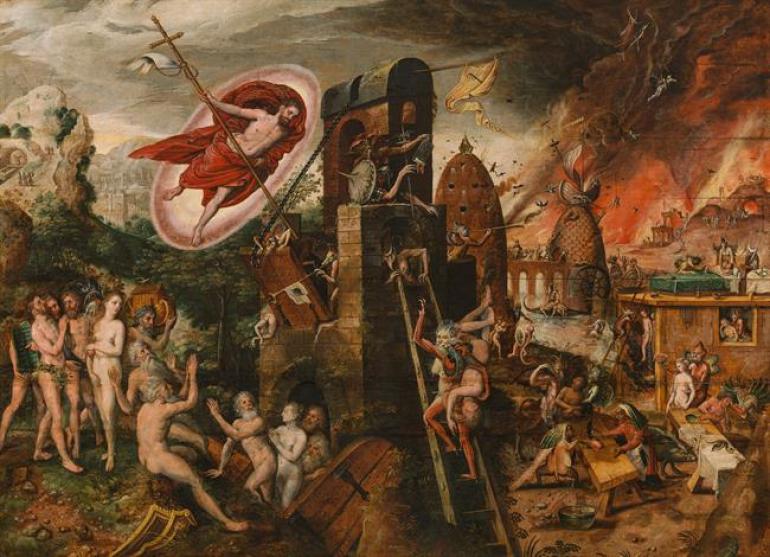
Follower of Hieronymus Bosch
Limbus – Descent of Christ into the Underworld, 16th century
150 000 - 300 000 €
Old Master Paintings: 14 December, 3pm
Hieronymus Bosch's imaginative, attractive and at the same time frightening beings influenced the artistic community from their emergence in the late 15th and early 16th centuries. The painting shows the descent of Christ into the underworld ("Hell's Journey of Christ"). Individual elements refer to Hieronymus Bosch, ie the mill wheel as a torture machine or devils, which supply the tortured with food or drinks. The way these are staged, picturesquely and also compositionally, is fresh and original.
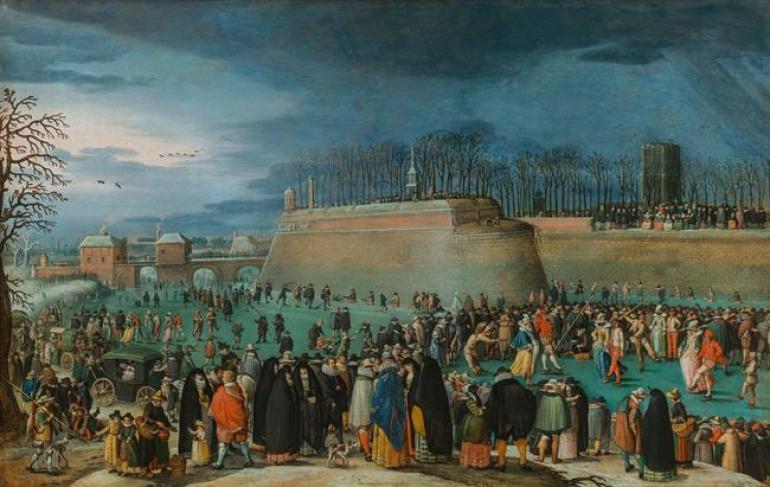
Attributed to Sebastian Vrancx
Winter carnival with ice skaters in front of the Kipdorppoort Bastion in Antwerp, around 1620
100 000 - 200 000 €
The present composition has traditionally been associated with Denijs van Alsloot, however in current art historical research Sebastian Vrancx is considered the creator of the composition. In 2015, another version, dated around 1618–1620, was auctioned in London (cf. Christie's London, 8 December 2015, lot 4, Sebastian Vrancx, oil on wood, 69.8 x 109.5 cm). Above all, the deviating arrangement of the figures in the foreground and middle ground, as well as the varying details in robes and physiognomy indicate that this is probably a previously unknown, independent variation. Furthermore, this painting, owned by Adalbert von Sandor of Szlavnicza, is a larger version compared to the works mentioned above.
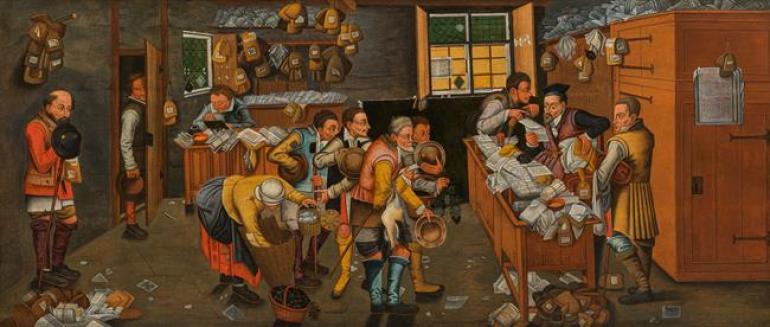
Follower of Pieter Brueghel the Younger
The Peasant Advocate, 1st half of the 17th century
50 000 - 100 000 €
One of Pieter Brueghel's most famous pictorial motives is the 'Peasant Advocate'. However, this depiction is much more of a persiflage on the profession of a lawyer, or even the denigration of it. Onhis raised seat, the lawyer in the doctor's hat sits like on a throne. With a serious face, he is immersed in the reading of a document, but the painter provides us with an ironic moral image of his time.

Follower of Raffaello Sanzio, called Raphael (Nicolas Poussin ?)
The Holy Family with the Boy John
150 000 - 300 000 €
The sumptuously framed painting is based on Raphael's composition "Madonna del Passeggio". Attributed in the past to the artist himself, the oil painting preserved in the National Gallery of Scotland, Edinburgh, is now considered a workshop execution, possibly by the pupil Luca Penni (1500-1556), which, however, is based directly on a drawing by Raphael. The painting from the possession of the Liechtenstein Gallery was kept in the inventories there as a copy by the hand of Nicolas Poussin (1594-1665). The painter was based in Rome from the 1620s, where he studied the works of the Renaissance masters. Nicolas Poussin, the French-born master of classicist Baroque, is still considered one of Raphael's greatest followers, whose harmonious style he passed on to Baroque painting.
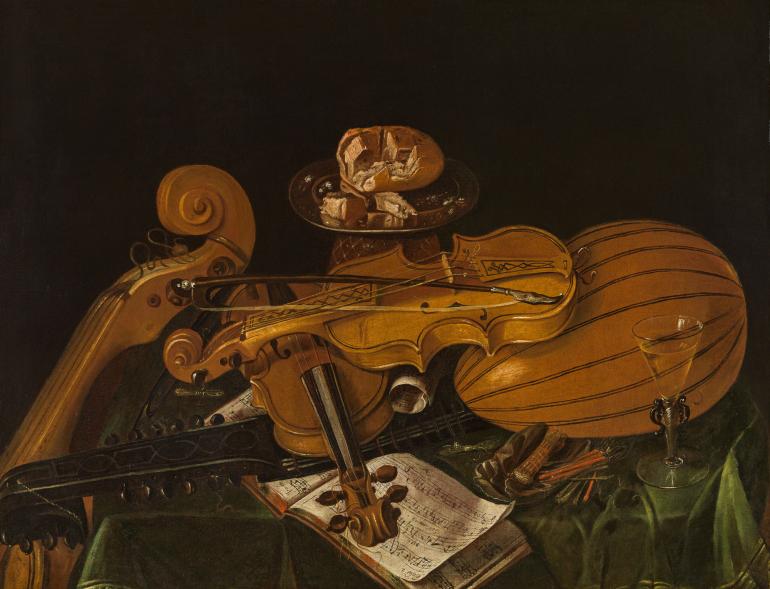
Circle of Evaristo Baschenis
Still life with string instruments
10 000 - 20 000 €
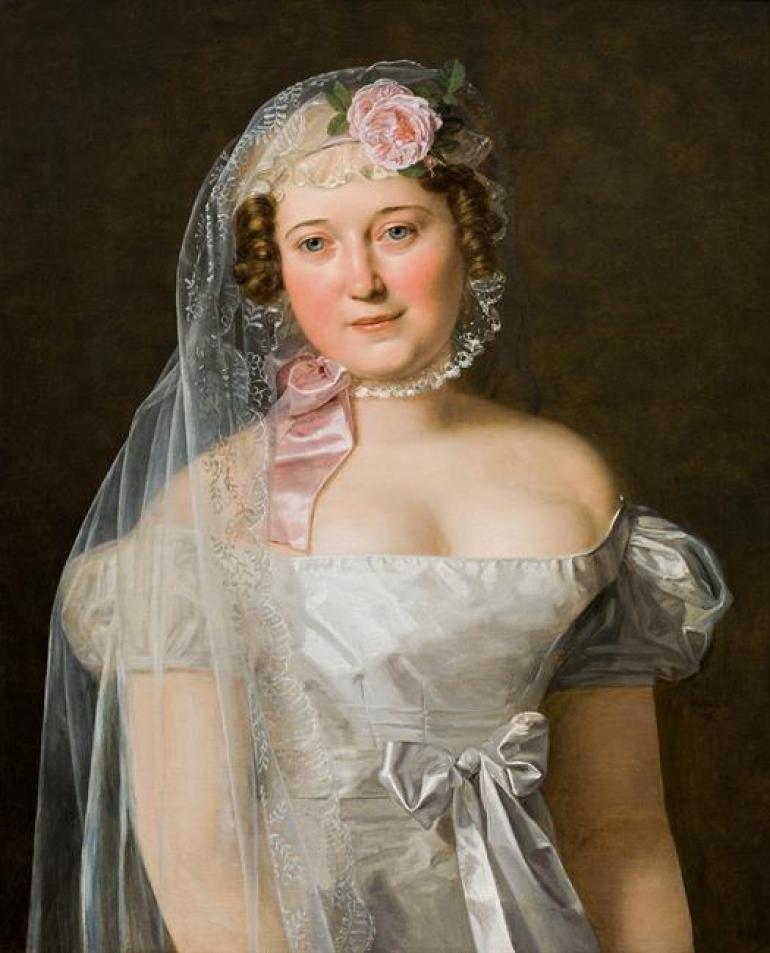
Ferdinand Georg Waldmüller
A bride, 1826
35 000 - 70 000 €
19th Century Paintings: 14 December, 4.30pm
By the year the painting was created, 1826, Waldmüller had already established himself as an extremely sought-after portrait painter. His clients included members of the bourgeoisie as well as the high nobility. Waldmüller reproduced his models unembellished, but always dignified. His virtuoso reproduction becomes particularly clear in the present portrait: With fine brushsmanship, the shiny fabric of the dress and the delicate, flowing tip of the veil stand out from the dark background in a contrasting way.

Carl Spitzweg
Experiences of an Older Man" (four round medallions), 1837
80 000 - 140 000 €
A great rarity are the four medallions of the cycle Experiences of an Older Man, which are described as follows: "Moon-addicted newspaper reader", "Late riser", "The widower, looking after girls", "Visit of Death". The round medallions come from the artist's estate and were originally intended for a cassette or a writing cabinet, and were held together by a frame, which is still available. Only recently have the works been framed individually. The medallions show Spitzweg's typical handwriting and once again identify him as an extremely critical observer of his time. Like no other, he knew how to expose human weaknesses through quiet irony. With a smiling, distanced gaze, he traced the much-vaunted idyll of the German petty bourgeois and created works that amuse without exposing his subjects.
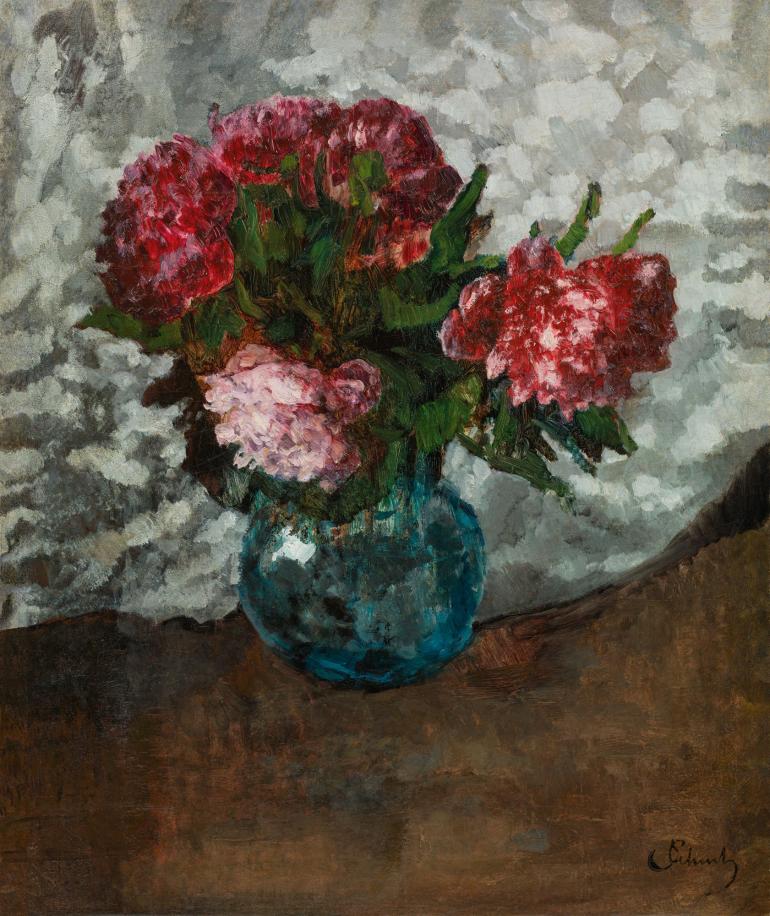
Carl Schuch
Red peonies, 1886/ 1893
70 000 - 120 000 €
Schuch turned to still life painting especially in his later years. The coarse brush style here reflects this period in his work. In a spherical glass vase, the red peonies stand on a brown background in front of a grey-blue draperie - Schuch aims at just such complementary contrasts in the colour arrangements in his late compositions. The inner harmony of the pictorial structure and the mastery of the contrasts are his means of translating the perceived reality into shades of color.
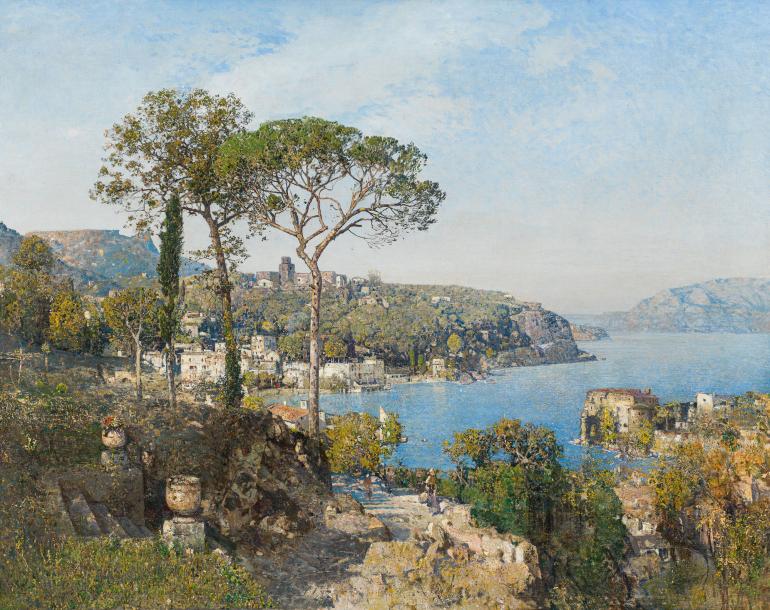
Robert Russ
Lake Garda landscape, around 1910/11
35 000 - 70 000 €
Russ was one of the most sought-after Viennese landscape painters of his time. From the mid-1870s, he was engaged in many important large-scale projects in Vienna, including creating decorative landscapes for the Burgtheater and the mezzanine floor of the Natural and Kunsthistorisches Museums. For his work he received numerous awards, in 1891 finally even the Great Golden State Medal. Russ was constantly traveling, again and again he was drawn to South Tyrol. Especially from the 1890s, the area around Arco and Riva on Lake Garda was his source of inspiration. Due to the special, sentimental lighting mood of his paintings, he was already called a "master of lighting effects" during his lifetime. (Alexandra Markl)
